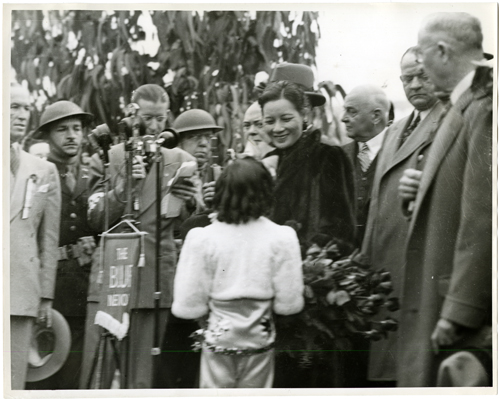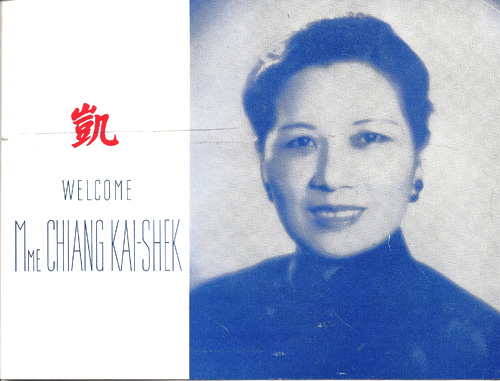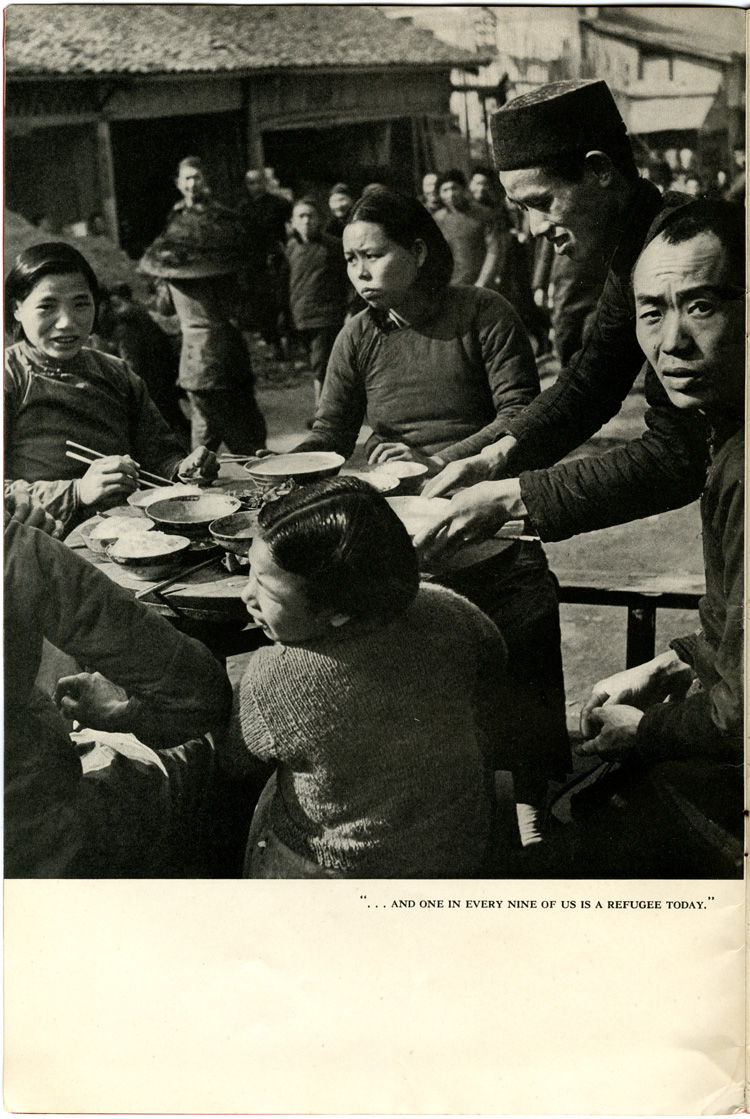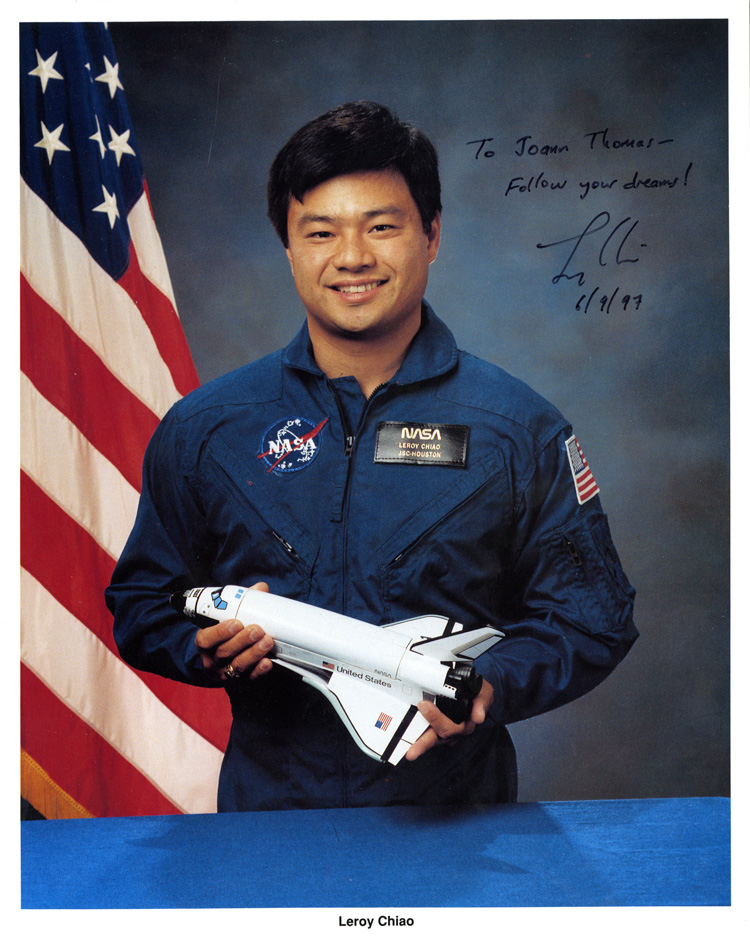
Madame Chiang Kai Shek via San Francisco, The San Francisco Examiner image, Courtesy of Roy Delbyck, Museum of Chinese in America (MOCA) Collection.
蒋夫人访美途径旧金山,The San Francisco Examiner image,Roy Delbyck捐赠,美国华人博物馆(MOCA)馆藏
Madame Chiang Kai-shek was born Soong May-ling on March 5th, 1898, the youngest of three daughters. In 1912, May-ling moved to the United States to attend university and eventually graduated from Wellesley College. In 1927, she married Chiang Kai-shek, who later became the leader of the Kuomintang. She wielded tremendous influence in China and abroad through her position as the First Lady of the Republic of China. She made several diplomatic visits to the United States to lobby support for the Chinese war efforts during World War II, drawing crowds of up to 30,000 people during her 1943 tour, pictured here at her stops in New York and San Francisco. She captured audiences with her political tact and eloquent speeches, which emphasized the similarities between China and the US. She further emphasized the need for a united Chinese and American war effort on the Asian front. Her visit fundraised $12 billion in American aid. Moreover, her comments against anti-Chinese discrimination in the U.S. helped to influence American policy. Her legacy prompted more Chinese-Americans to participate in the war effort against the Axis Powers, and effectively helped many leave the traditional restaurant or laundry businesses that defined early Chinese immigration to the United States. Madame Chiang Kai-Shek’s education and confidence empowered Chinese-Americans to see themselves as products of the American Dream, and actively take steps to fulfill their ideals. A global icon in her own right, in 1943, she would grace the cover of Time Magazine for the third time.


